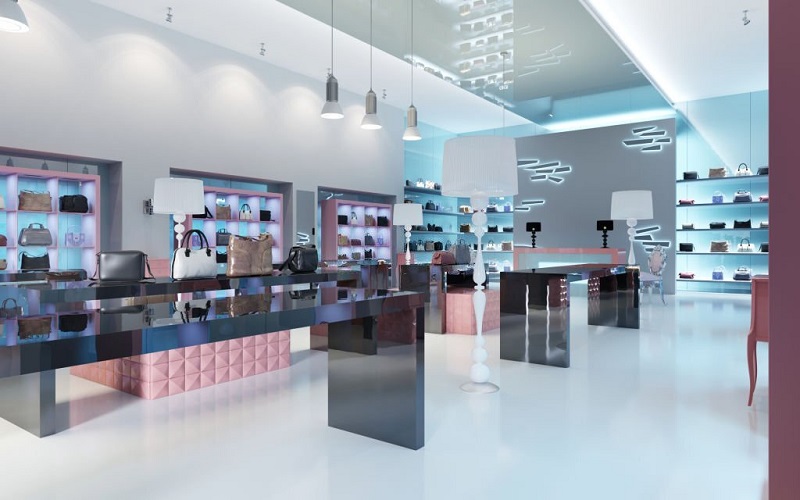Over the years, shop fitouts have gone through remarkable transformations. From focusing solely on displaying products to creating immersive spaces that connect with customers, retail design has greatly evolved. In today's world, where a customer's experience is key, store owners must keep up with the latest trends in order to remain competitive. This article will cover the evolution of shop fitout design, the top trends we see today, best practices for incorporating these trends, and a look into the future of shop fitouts.
Evolution of Shop Fitout Design
The past few decades have witnessed a significant shift in the way shop fitouts are designed. Initially, the main objective was to showcase as many products as possible within the available space, with little attention to aesthetics. However, as retail experiences evolved and consumer behavior changed, so did the focus on store design.
Now, stores are not just about selling products; they are about creating memorable experiences that leave lasting impressions on customers' minds. More than ever before, retailers are using creative and innovative ways to connect with their target audience, harnessing the power of design to transform stores into engaging places that drive sales and build brand affinity.
 |
| Shop Fitouts |
Top Design Trends in Shop Fitouts
1. Sustainability
Sustainable materials and practices are a significant trend in the retail industry. More and more store owners are opting for environmentally friendly materials and energy-efficient solutions. Green building materials, like reclaimed wood, recycled metals, and low VOC paints, are highly popular. LED lighting is also being widely adopted for its energy-saving properties.
The increasing awareness about environmental issues has led consumers to prefer brands that demonstrate their commitment to sustainability. Therefore, incorporating this trend into your shop fitout design can create a positive image and help attract eco-conscious customers.
2. Flexibility
Flexibility in shop fitout design is essential to accommodate the changing needs of retailers and customers. By incorporating adjustable and movable fixtures, partitions, and displays, you ensure your retail space can adapt to trends and ever-evolving customer preferences.
Flexible designs provide retailers with a cost-effective way of adapting their store layouts and display options, making it easier to refresh the space and keep it visually appealing.
3. Storytelling
Storytelling is a powerful approach in retail design. By creating a cohesive narrative that weaves through the entire store, retailers can deepen their connection with the customers, evoking emotions and capturing their attention.
Elements like thematic color palettes, unique display methods, visual merchandising, and engaging in-store signage can help tell the brand's story and create a memorable experience that customers will want to come back to.
4. Technology Integration
Combining physical retail environments with digital experiences is a crucial aspect of modern shop fitout design. Technologies like digital signage, interactive displays, and virtual reality experiences all contribute to enhancing customer engagement.
By incorporating digital elements into your store design, you reinforce the brand's modern identity and create an experience that resonates with tech-savvy customers.
5. Personalization
Personalization is key to standing out in the competitive retail landscape. Creating a space that is tailored to the specific preferences and requirements of your target audience showcases your commitment to delivering an exceptional customer experience. Consider utilizing customer feedback and data to customize your store design to better cater to your customers' needs.
 |
| Shop Fitouts Design |
Best Practices for Incorporating Shop Fitout Trends
1. Research and analyze your target market to understand their preferences and tailor your store design accordingly.
2. Collaborate with experienced design professionals who can recommend and incorporate the best-suited trends for your retail space.
3. Be open to innovation and new ideas, but balance them with practicality and adaptability.
4. Test new trends on a smaller scale before implementing them throughout your entire store.
Future Trends in Shop Fitouts
The future of shop fitouts will continue to be driven by customer preferences and expectations, as well as technological advancements. Some possible future trends include:
1. More flexible and modular designs, as well as multi-functional spaces that cater to different customer and retail scenarios.
2. Enhanced focus on sustainable and eco-friendly materials and practices.
3. Increased use of smart technologies, IoT, and AI to provide personalized customer experiences and gather valuable data.
4. Integration of virtual and augmented reality experiences to blend digital and physical retail spaces seamlessly.
Conclusion
Keeping up with the top design trends in shop fitouts may seem daunting, but it is essential to stay competitive in the retail industry. By listening to your customers, being adaptable, embracing innovation, and collaborating with industry experts, you can create captivating retail spaces that boost customer engagement and drive business success.









